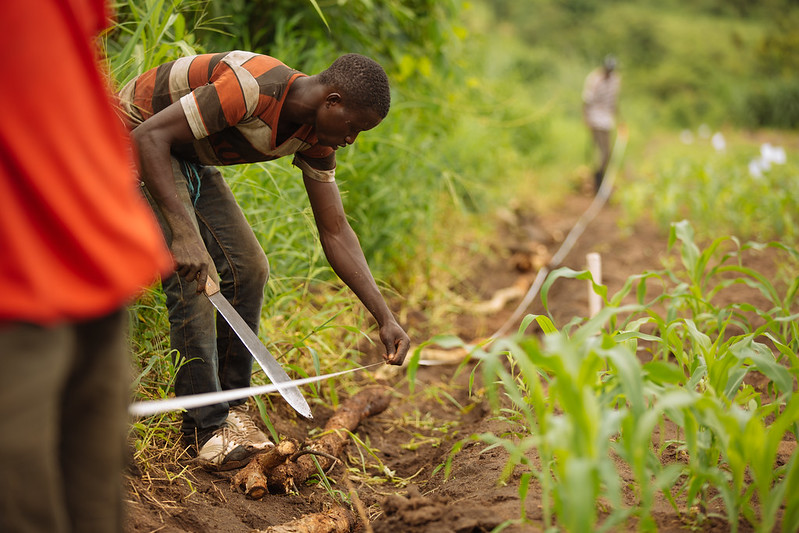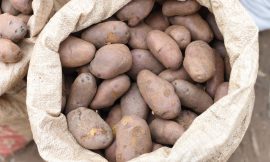Editor’s Note: The global food supply chain faces increasing strain from several factors, including conflict and climate shocks. In 2024, nearly 300 million people worldwide experienced high levels of acute food insecurity, with 733 million facing hunger. This piece explores how agricultural innovation, rooted in science and enabled by trade, offers one of the most powerful levers to restore resilience and ensure access to affordable, nutritious food.
For decades, open trade and rules-based globalisation have shaped the world we operate in. But today, we must face up to a harsh reality. We are undergoing what might be called a “rapid unscheduled disassembly,” to borrow Elon Musk’s euphemism to describe his recent rocket explosion over the Indian Ocean. The world is fragmenting. The old economic models increasingly appear to no longer be viable, nor politically realistic. We are entering a new era, one that will test industries, governments and global cooperation like never before.
But let’s be clear: trade is not going to stop. Trade will continue between nations around the world. So existing models will need to adapt in the face of geopolitical volatility and climate crisis. Farmers will continue to farm. But they will need new technologies, enabled with practical regulations and policies to help them feed a rapidly increasing world population at home and abroad. And lastly, our planet will not conveniently put its climate emergency on hold to accommodate the capricious demands of geopolitical volatility.
The future of food supply
Among the most urgent challenges we face today is the future food supply. In the decades to come, the geopolitics of food will shape prosperity, security and stability across nations. Disruptions in trade, climate change and shifting alliances all threaten to upend a fragile global balance – and if we don’t find new ways to collaborate, we will not be able to feed our growing population while simultaneously restoring our planet’s health.
We can’t afford to cling obstinately to outdated models. Instead, we must lead the charge in crafting a new, resilient global framework – one that acknowledges the changes happening around us, while reinforcing our shared responsibilities.
This does not have to be a moment of global crisis. Instead, it is a turning point; an opportunity. New advances in plant science, digital technologies and farming innovations all have the potential to continue and accelerate global productivity trends while also addressing food security and climate challenges within a decade. Today’s cutting-edge science and technology can fortify global agriculture, making it more resilient to economic upheaval, as well as climatic or environmental disruption.
By working together, governments, the grain industry and the plant R&D sector can take a bold leadership position in this global hour of need. New ways of doing things are springing up in industry sectors all around us, as well as among us. It is this kind of disruption and transformation that is needed to meet the challenges we face.
So, let’s embrace the transformations required. We are all going to need to adapt very rapidly in the short decades ahead. We must be in the driving seat of that transformation.
Embracing new realities as the solution
The core of the solution is productivity, powered by new plant science technologies in seed and crop protection that also safeguard climate and nature. Plant-science technology is the bedrock, the foundation, the facilitator and the enabler that will underpin every aspect of food and farm geopolitics in the coming decades.
We need to embrace this reality and build an international consensus around it. By working with historical and new coalitions of like-minded stakeholders, we can and we will make positive breakthroughs, for example, around long-standing issues like asynchronous approvals as well as emerging opportunities like consistent policy around genome editing in plants.
The world population is set to top 9 billion by 2050, doubling the demand for food. Today, one in six people relies on global trade to be fed. So international trade will remain a potent lever for food security, social prosperity and economic resilience and needs to operate in an environment which incorporates these essential plant science technologies. Trade also gives farmers market access to the essential agricultural innovations that will help them meet the rising food demand.
But the era of all-encompassing free trade agreements is mostly over, and will increasingly be replaced by transactional mini deals, not all so respectful of the World Trade Organisation (WTO) rules. Like it or not, we need to work within this reality, too. And the fragmentation that will result from these dynamics will have differing effects on the ability of farmers to access technology.
We will need to collaborate all along the value chain to transform the international organisations and their systems, to ensure our products can continue to move around the world freely and smoothly.
The three fundamental building blocks of sustainable future food security
The first is ‘resilience.’ Resilience comes from trade plus productivity. And, as will be emphasised at the G20 in South Africa this year, resilience also comes from increasing local productivity, especially in regions of the Global South. Here again, genetic engineering and advanced plant breeding techniques are helping to develop crops able to withstand droughts, pests, and diseases, ensuring more stable food production even in challenging conditions.
A key theme of COP30 in Belém this coming November is ‘adaptation’. In other words, looking at the progress made by countries in building resilience to the climate changes that have already taken place.
The second fundamental building block is ‘productivity’ itself. Global productivity gains are only going to come about through new plant science technologies: the innovations that are supplied by our sector. Precision agriculture and AI-driven farming will optimise the use of finite resources, increasing yields while minimising waste. Meanwhile, climate-smart and precision farming practices, cutting-edge digital technologies and new plant breeding techniques, innovations in soil health, water conservation and eco-friendly pest control – these will all contribute to long-term agricultural sustainability.
If we are ambitious, if we put our scientific knowledge to work, if we take decisive action, we can significantly increase food production around the world while still safeguarding the planet’s environment.
The third is building ‘trade’. Specifically, open, rules-based and predictable trade. We must safeguard and enhance the multilateral rules-based trading system and reference bodies in ways that support research and development of agricultural innovation and, crucially, give farmers access to these new technologies. In order for this to take place, member governments should ensure that relevant international standard-setting bodies, particularly Codex Alimentarius, are adequately and sustainably resourced.
The centrality of science- and risk-based assessments should be strengthened as the basis for sanitary and phytosanitary measures. Particularly, Codex should be reinforced as the reference standard for food safety, thus facilitating non-discriminatory, transparent, open and effective international trade of safe food. Addressing non-tariff barriers will also be a key determinant in facilitating trade to maximize market access opportunities and strengthen the resilience of food systems.
A call to action: accessible innovation as the key to affordable and nutritious food
Achieving sustainable food systems requires a functioning rules-based, multilateral trading system. Discriminatory unilateral measures, including those with an extra-territorial effect, the so-called ‘mirror clauses,’ risk preventing market access that enables agricultural development and undermines the collective and collaborative efforts needed for sustainable global food production. Multilateral trade dialogues under the rules-based WTO system and adherence to international standards are essential building blocks for progress towards open, rules-based and predictable trade.
Innovation is key in enabling global access to affordable and nutritious food and should be recognised. As global temperatures rise, new threats are emerging, and the geographic range of insects and diseases is changing. Farmers and food systems need new tools and technologies to adapt and deal with these new threats and to preserve export markets and rural livelihoods.
My call to governments is this: these innovations need to be accessible and should not be limited by non-tariff trade barriers. Neglecting local crop production needs for policies based on a one-size-fits-all approach risks limiting food systems’ sustainability. Removing valuable tools from farmers based on unilaterally imposed measures increases uncertainty for countries that export, and for the farmers who rely on exporting these products for their livelihoods. Climatic conditions, pests and diseases vary across regions and countries.
We need to see a reset here.
This piece was initially published by CropLife International and has been revised to suit Farming First’s editorial guidelines.
Header photo credits: Mitchell Maher/IFPRI






